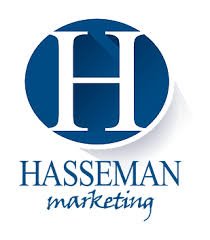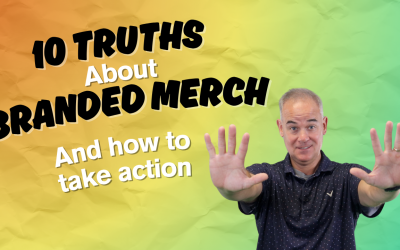Let me be clear. We are unabashed and unapologetic fans of promotional products. We know that they are a powerful marketing tool for you and your organization. You probably know that too. We have written about how they can help you grow your business, how they can help you do trade shows more effectively, and how they fix the appreciation gap in most organizations. Promotional products should be a big part of your marketing strategy.
But no marketing media is perfect.
While promotional products are a wonderful way to reach your customers, there are problems with buying promotional products too. We get that. So we wanted to address some of those challenges here…and hopefully give you some ideas on how to deal with them!
The Problems with Buying Promotional Products
Let’s just start with the idea that no one likes surprise charges. And as you will see as we go through some of the industry challenges, surprise charges are one of the biggest sticking points when purchasing branded merchandise.
Your promotional product sales pro comes to you and says “Great news! I have a special on coffee mugs. They are $1 and you have to buy 500 of them.”
“Great,” you might say. “This it will cost me $500?”
With a hesitant look on their face, your promo pro will say, “Well…” Then they will tell you about the setup charge, the art charge, the proof charge, and the shipping (and don’t forget tax). It’s about then that you realize that your 500 $1 mugs will cost you about $750.
It’s easy to feel frustrated, and sometimes mislead when this happens. So let’s dig into why each of these fees exist.
Setup Fee
When you are buying an item in retail, that item was created in bulk. Each one is essentially the same. So when it comes time to purchase a pair of shoes on Amazon, they can pick up any size 11 and ship it your way. The same is not true when it comes to promotional products. Each order is customized with your logo (and often contact information) on it. That means with every order, there is custom handling on the order. Whether that means creating a traditional screen, setting up the art, getting the machine ready to print the job (or many other ways these items are imprinted) there is handling.
The order has to be “setup” to run. This setup is done by someone that needs to be paid. It’s a bit of an oversimplification, but this is when “time is money” is real. Generally, this is a fee charged by the supplier that is “passed through” to the customer.
While you may be saying, “I don’t want to pay set up charges,” or you might be thinking that “my distributor doesn’t charge me for set up,” I would caution you. Someone is paying for it. Sometimes the supplier will waive it (so they pay their person and eat the charge). Every once in a while your distributor might pay it. Or maybe they are building it into the cost of the item (so you are paying it).
It’s a little like ‘free shipping.” Most of the time, you are paying for it somewhere.
Bottom line: A setup fee is a real thing. The best way to combat this is communication. Make sure you are asking about any setup fees on the front end. Whether you like them or not, you want to know about them on the front end!
Art Charges
While there are exceptions to every rule, this is one I think falls under the “legit” charge. Why? Because generally speaking, an art charge comes when the customer is not providing quality, vector art. Want to know what that means? Check out this blog.
This usually happens because of one of two reasons. Either they simply don’t have good art, or they are being lazy (I say this with love, of course). If you don’t have good art, no problem. But it does take the work of a professional designer to create that art. Trust me. You don’t want to create a branded item with a bad imprint. That’s not good for anyone and it does your brand a disservice. So paying a nominal art charge (think between $25 and $65 depending on complexity) is well worth it.
The lazy reason is simple. The organization probably has the art (they had it created at some point), and the person does not feel like looking. That’s cool too. But again, it takes time to recreate it. It’s amazing how often, when an art charge is brought up, the vector art magically appears.
Bottom line: Want no art charge? The answer is simple. Provide good art.
Proof Charges
This is probably my biggest pet peeve in our industry. To me, this is a charge to you to make sure we got your imprint correct. This is nonsense.
This is generally a fee charged by our supplier partners (love you guys). My take on this is, our suppliers are being beat up to the penny on nearly every item they sell, so they are looking at ways to create margin on their product without (technically) affecting the “per piece” price. It helps them as they fight to show up with a good price in search. But customers do not understand (nor should they) that they have to pay extra to make sure the imprint is what they want. So many distributors like us, simply eat that cost in order to help the customer experience. As I said above, someone is paying it. Generally, it’s us on that one.
The one caveat to this is the customer that asks for proof after proof after proof. Don’t get me wrong, an occasional change is totally cool and makes sense. But when we proof your order 5 or 6 times, charging for the time does start to make sense. At that point, you are using the supplier as your art department, and that’s not cool either.
Bottom line: If you send good art and are using the proof just to make sure everyone is on the same page, I don’t think you should be charged.
Shipping Charges
The best thing about Promotional Products is that we have a very physical media. When done right, branded merchandise can affect all 5 of the senses. But when you have a physical marketing piece, you have to physically get it there! That is where shipping comes in. We have to ship the items to get them to you, your customers or your employees. That costs money.
For the most part, your distributor (or even the supplier) does not set those fees. We are at the mercy of UPS, Fed Ex and USPS. But here are a few things to consider when shipping promotional products.
When do you need them? Just like anything else, if you plan ahead you can save money. If you wait until the last minute, it will cost more!
Where are they coming from? One of the things your distributor should tell you (but if not, you should ask) is where are these items coming from. Sometimes the item you are ordering only comes from California and you are stuck. But often, there are different suppliers that have similar (or the same) products. If so, you can order from the one closest to you for speed and cost efficiency.
How heavy (or big) are they? There are certain things that are heavy to ship. Paper products are heavy. Drinkware is not that heavy, but it takes a lot of space. So you are ultimately paying to ship air. These might be non-negotiable, but if they are, then this consideration might save you some time and money!
Bottom Line: Shipping is real cost. But when you can (and most of the time you can) ask for a shipping estimate. This can help you know on the front end how much shipping will affect your overall bill.
These are real problems you can run into when ordering promotional products. But once you understand these, you will come to find that, as a marketing tool, promotional products are still totally worth it. The antidote for nearly all of this, as you might suspect is communication. One way we are working to remove some of this friction is to provide you a sales order to approve in advance. This way you have the ability to see all of the charges in one place. While we are not perfect, this helps to alleviate some of the confusion on the back end.
My final piece of advice is to ask questions. The goal of this blog was to arm you with some of the questions to get you started. If you want to create a promotional products campaign that really delivers, click here to chat with us.
Oh…and while many people will say “we wrote the book on…” we actually did write the book on how to do Promo right. Click here to buy that for you and your team.





